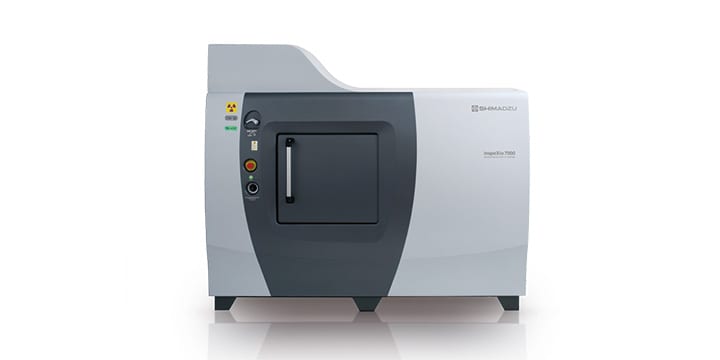
inspeXio™ 7000
- The X-ray CT system can be used to verify the internal quality of products, as nondestructive 3-dimensional observation of the internal structure of specimens is possible, enabling the evaluation of voids that occur in adhesives and length measurement of built-in parts. - Qualitative analysis of organic substances such as resin materials and adhesives of component parts is possible by using an infrared microscope.
ADAS (Advanced Driver-Assistance Systems) are systems which are used to support safe driving, and have functions that improve driving safety by monitoring the surrounding information of an automobile and providing displays and alarms to prevent accidents, allowing drivers to drive safely and comfortably. In monitoring the surrounding environment of a vehicle, ADAS uses wide field cameras, millimeter-wave radar, ultrasonic sensor, and other instruments, but because these devices consume a large amount of electric power and also generate considerable heat, a mechanism for efficient heat dissipation and cooling is necessary. Furthermore, since these monitoring sensors are arranged outside the vehicle body, airtightness is important in sensor cases. While resin parts are used in some sensor cases from the viewpoint of weight reduction, heat resistance and low warpage are required so that the cases will not be deformed by the heat generated by the electronic parts they contain. Therefore, it is necessary to evaluate the properties of the resin material itself and its additives. In this article, a millimeter-wave radar device used in an ADAS was evaluated using a microfocus X-ray CT system (Fig. 1) and an infrared microscope system (Fig. 2). The X-ray CT system was used in nondestructive observation of the internal structure and investigation of voids in the adhesive and the installation angle of the wide-field camera, and a qualitative analysis of the resin material used in the case was carried out with the infrared microscope.
April 2, 2024 GMT
Some products may be updated to newer models